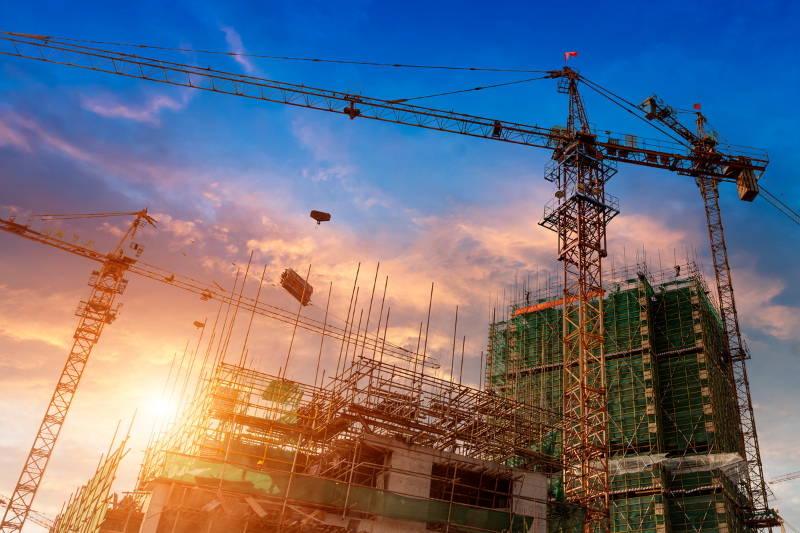
The U.S. economy added 228,000 jobs in March, according to the U.S. Bureau of Labor Statistics, reflecting stronger-than-expected growth and signaling continued resilience in the labor market. While sectors such as healthcare and transportation led the gains, employment in construction remained unchanged, a data point that may take on greater significance as federal policy shifts and market volatility increase.
Steady and Cautious in Construction
March brought no significant changes to employment in the construction sector. That stability, though lacking the headline-making momentum of other industries, is notable in the context of ongoing uncertainty related to trade policy and federal spending. As material costs remain unpredictable and infrastructure priorities evolve, steady construction numbers can be seen as a signal of cautious optimism.
Many major projects — especially in public infrastructure — rely heavily on federal funding. As such, the outlook for construction hiring in the coming months will hinge largely on how clearly and consistently those funding and policy decisions are communicated. Design-build teams, known for their agility and efficiency, are particularly well-positioned to navigate this evolving landscape.
For teams looking to strengthen their skills and prepare for the shifting landscape ahead, DBIA offers a variety of resources. These include comprehensive certification programs for DBIA® and Associate DBIA® credentials, robust education and training offerings including virtual and in-person courses and free tools and primers such as the Design-Build Done Right® Best Practices.
March Labor Market Highlights
Total nonfarm payroll employment increased by 228,000 in March, outpacing the 12-month average and defying expectations of a slowdown. The unemployment rate ticked up slightly to 4.2%, largely due to more Americans re-entering the workforce. This increase came despite significant cuts to federal government employment and was stronger than many economists had predicted for the month, highlighting the labor market’s ongoing resilience in the face of policy-driven disruptions.
Health care led job growth with 54,000 new positions, followed by social assistance (+24,000), transportation and warehousing (+23,000) and retail trade (+24,000). Wage growth also remained strong, with average hourly earnings rising 0.3% in March and 3.8% over the past year — outpacing inflation and increasing real purchasing power. However, these figures do not yet reflect the potential impact of recently announced tariffs and trade policy shifts, which could influence hiring and wage trends in the months ahead.
Federal government employment fell by 4,000, continuing a downward trend driven by workforce reductions and severance delays. Despite this, private sector hiring remained stable and robust.
Policy Headwinds and Trade Uncertainty
Even amid solid labor market figures, attention is shifting toward potential risks. New import tariffs have introduced significant uncertainty. Business leaders across sectors, including construction, are reevaluating hiring and investment strategies in anticipation of rising material costs, delayed procurement cycles and global trade retaliation.
The construction industry in particular may feel the ripple effects in the form of increased prices for materials and equipment critical to project planning and cost estimation. While steel, aluminum, lumber and copper are currently exempt from the new round of reciprocal tariffs, earlier tariff actions implemented in March have already begun driving up material costs across the industry. Already, some firms are reportedly reassessing project timelines and delaying new starts as they monitor evolving policy impacts, a trend that has been present since the Covid-19 pandemic. Analysts warn that higher costs and reduced market confidence could slow construction spending in the private sector, while public-sector projects may face renewed uncertainty as federal budgets adjust to broader economic pressures.
Implications for Design-Build Teams
For design-build teams, these economic signals underscore the growing importance of integrated, efficient project delivery. As contractors and Owners face rising costs for materials, design-build’s collaborative approach offers a way to adapt in real time. The ability to bring all key players to the table early helps teams anticipate challenges, collaborate on solutions and avoid delays that can result from procurement disruptions.
Additionally, as public funding becomes more fluid in response to shifting federal priorities, the certainty and schedule advantages of design-build become even more critical. Design-build teams are uniquely equipped to pivot when budgets shift or timelines compress, using early decision-making and risk-sharing to keep projects on track. In today’s environment of economic and policy uncertainty, design-build remains not just a smart option but an essential one.

